Library Commute
Metro line 6 to Bir-Hakeim then a 10-minute walk to the American Library passes by the Iron Lady, wreathed today in bright November.
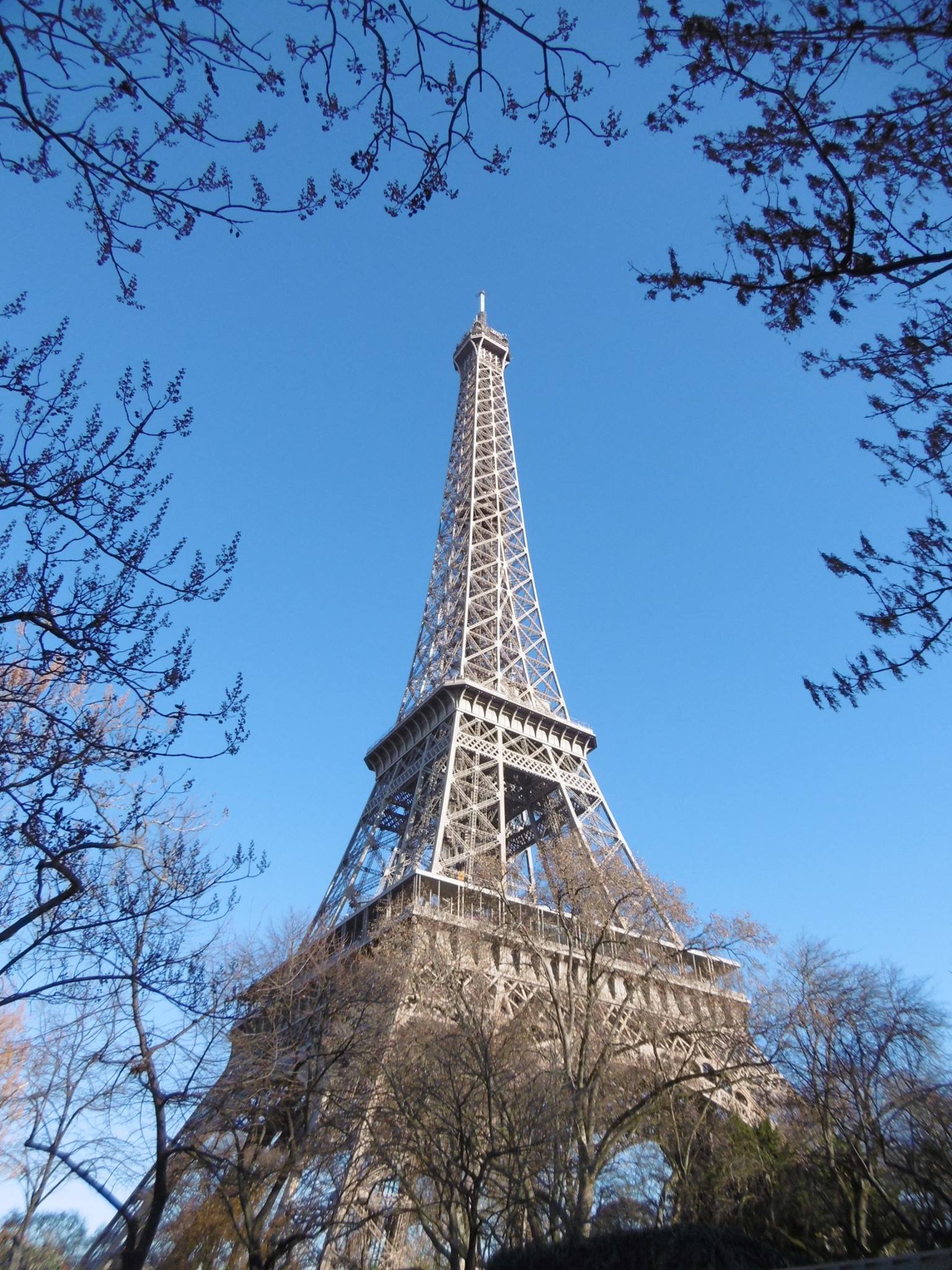
Metro line 6 to Bir-Hakeim then a 10-minute walk to the American Library passes by the Iron Lady, wreathed today in bright November.

I love doors. Whenever Catherine and I go exploring in a town or village, I always fall behind because I'm looking at them. I have the idea that you could tell the history of civilization talking about doors.
This one, opposite the corner of rue Monsieur Le Prince and rue Dupuytren, integrates the window above. Check out the carved Earth motif. There are other things in there, too, including a book. I'm going to have to find out who made this door and why.
“Many when they come to die have spent all the truth that was in them, and enter the next world as paupers. I have saved up enough to make an astonishment there.” — Mark Twain
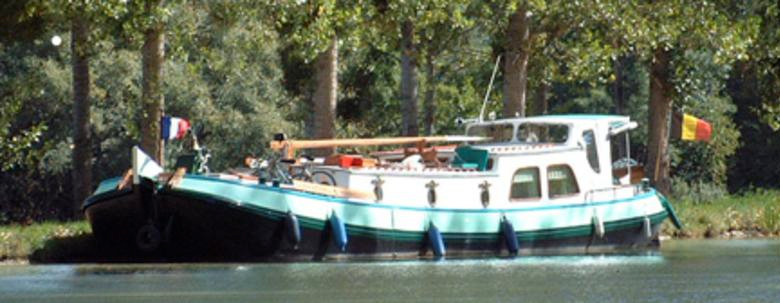 The Phaedra moored on stakes along the Burgundy Canal (photo by Cris Hammond)
The Phaedra moored on stakes along the Burgundy Canal (photo by Cris Hammond)
The Phaedra is a flat-bottom barge, 56 feet long and not twice as wide as my outstretched arms. Originally a commercial craft, she was put to service in 1925, hauling milk and cheese along the waterways between Holland and Belgium. At the time, a barge was pulled by men or horse along canals. For river navigation, she was built with a single mast. Made obsolete by a combustible engine, the mast now lies fixed over the main cabin.
I asked Cris what happened to the Phaedra during the war. He said none of his papers about the boat give any clue and suggested I make something up. So let’s imagine for a moment…
During World War II the Phaedra was requisitioned by the German army to ferry troop supplies from the Netherlands, through Belgium and into occupied France. Unknown to the Germans, the Dutch bargeman, whose name was Raemaekers, also carried coded messages between French resistance fighters and spies in Holland, who transmitted the messages to General de Gaulle in London.
Raemaekers almost got caught in early June, 1944. At Charleville, a port town on the Meuse, northern France, a German officer stumbled onto the scene during the message exchange. The bargeman fled on foot with the resistance operative, a French woman he called Angelica. Taken in by an old spinster and hidden in the cellar, the two spent a torrid night in each other’s arms.
The following day news of the Normandy invasion caused mayhem in the town. That night, Raemaekers slipped aboard the Phaedra and, learning that the Germans had blocked downstream traffic to allow shipments to the front, he made his escape south, up river. Angelica, continuing the mission, took the message north.
For months, Raemaekers navigated rivers and canals through occupied territory. He made it as far as Saint-Jean-de-Losne (pronounced /lohn/), at the end of the Burgundy Canal. As he pulled the Phaedra through the last lock into the Saône River, a series of three explosions cracked the air. The German army had blown up the bridge over the river to cover their retreat ahead of advancing Allied troops from the south.
Though he tried to track her down after the war, Raemaekers never saw Angelica again.
The entire story is documented in a book called The Phaedra Adventure, and none of this is true.
It is true, however, that the Phaedra was converted to a pleasure barge in the late 1940s. The cargo hold became a small apartment, complete with kitchenette, living area, two staterooms, two toilets and a shower. Also installed at this time, a pair of stained glass windows filter outside light from the pilothouse into the living area.
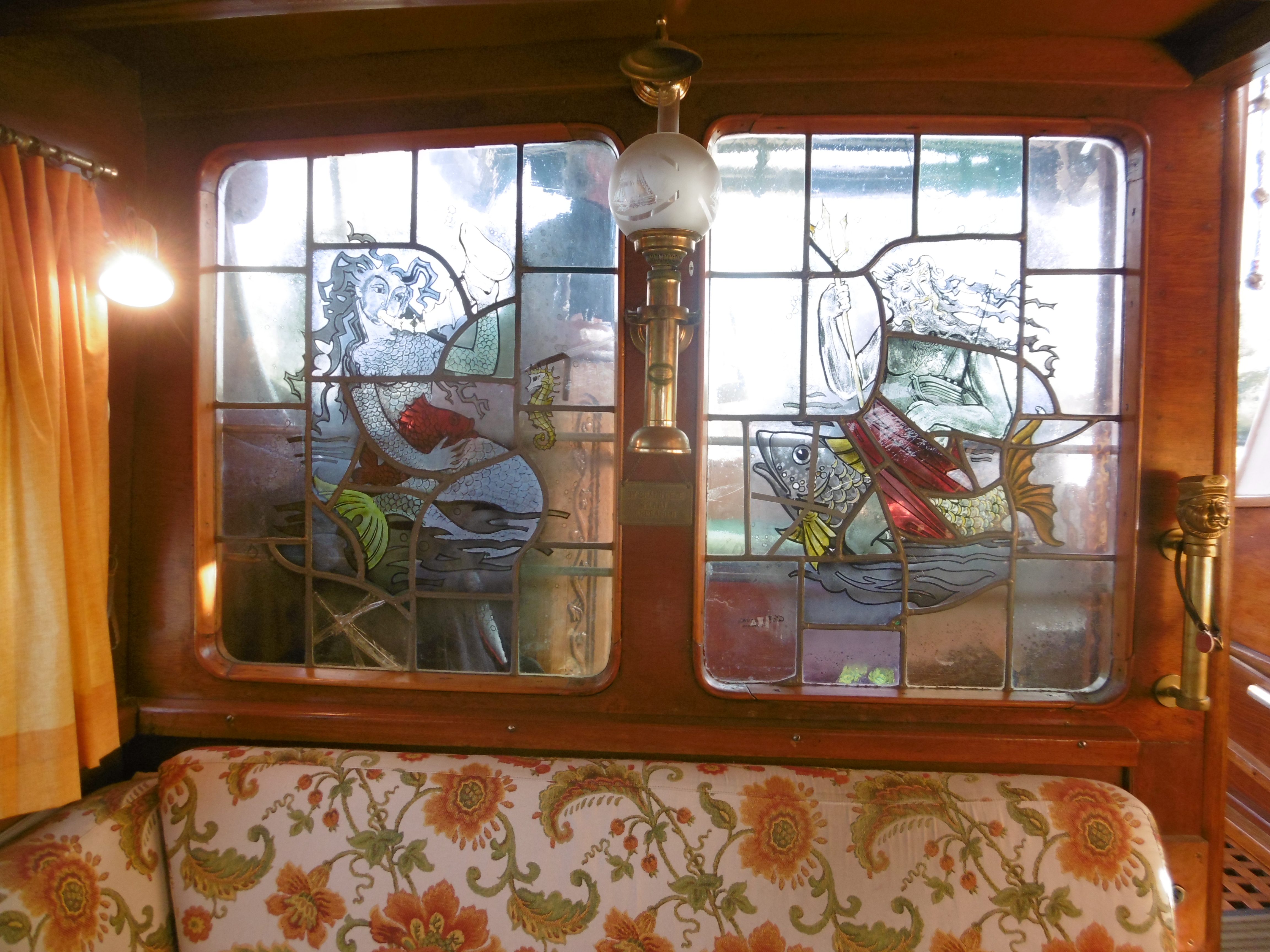 Amphitrite (left) and Poseidon in stained glass
Amphitrite (left) and Poseidon in stained glass
The windows depict Poseidon and Amphitrite, god and goddess of the sea. In Greek mythology, Phaedra is the daughter of Minos, first king of Crete, and Pasiphaë, who also gave birth to the Minotaur. The father of Minos was Zeus, brother of Poseidon. So the stained glass god and goddess are great uncle and aunt to Phaedra, and her half-brother is the Minotaur.
Before Cris, the Phaedra’s owner was a doctor and master woodcarver, who bought the barge in the 80s. In addition to fitting a new engine, he carved nautical and floral motifs in the wood trim, including the wheel pedestal.
Cris became the proud new owner in 2001 at Saint-Jean-de-Losne. He painted her in greens and blues. It’s a lovely palette for a barge that is today a veritable work of art. I’ve seen tourists strolling along the quay stop to take photographs and selfies with the Phaedra.
Between Poseidon and Amphitrite hangs a brass plaque with an inscription in Dutch: “BY BRAND DEZE PLAAT OMDRAAIEN”
Thinking it must be a motto, I asked Cris what it meant. He said, “Reverse this plaque in case of fire…”
Laid off from his Silicon Valley job, Cris Hammond bought an old barge in the south of France. He and his wife, Linda, brought it along rivers and canals all the way to Paris. You can read an account of the entire voyage in the book Cris wrote about the experience. You'll also learn about the Phaedra, an adorable 1920's Dutch barge. From Here to Paris is an entertaining ride through the locks and canals of southern France. Bill Bryson might have titled it, Up the River.
For this weekend's adventure, "Here" is the Port of Cergy. End of last spring, I went with Cris and crew to take the Phaedra from Paris to her summer berth 40 nautical miles down the winding course of the Seine. Summer's over and Cris is back in wine and cheese country. So I'm helping him with the return trip.
We have a fueling operation today. If all goes well, I hope we'll have time to visit Auvers-sur-Oise. Back in the 1860's, one of the Barbizon painters, Charles Daubigny, went up there and attracted his own group of landscape artists. Van Gogh was one. Though he lived there for only a few months before his death.
Cris and I will spend the night like sailors in port, then we cast off tomorrow for the voyage to the Port de l'Arsenal at Bastille. Cris will pilot, of course. I'm navigator. Navigator, in this case, is a big word for counting bridges and making sure the river is flowing the right direction. I get to look at the map, though, so I'm okay with that.
Phaedra, Port de l'Arsenal, Bastille, Paris, June 2016
“Drawings done with the intention of later expanding them into full-sized frescoes were called cartoons; Artimus believed that the fragile, discolored sheet which he held in his hands was just such a document. More, he believed that the Rousseau and Vincent alluded to in the scribblings on the reverse side of the vellum were in fact the landscape artist Theodore Rousseau, and the mad master Expressionist, Vincent van Gogh. The cartoon itself, he believed, had been drawn by a contemporary of Rousseau’s, Jean-François Millet, and consequently became known, if somewhat inaccurately, as The Millet Fresco.”
— James A. Owen, The Barbizon Diaries, p. 4
The image above is a scan of my own rendition of the fresco sketch, or cartoon, from the description in the Prologue of The Barbizon Diaries.
The cartoon’s scale shows a fresco 15 feet high by 36 feet wide. I wanted to impress the size and proportion on my mind so, were I to pass by it, I might recognize a surface that could take a painting so large. A quick outline on graph paper was enough. But I couldn’t pass up the opportunity to recreate an artifact.
I didn’t have any charcoal handy. Instead, I used a blunt 9B graphite pencil with indiscriminate smudges. I imagined only hints of a scene that Millet and company might have come up with. The vellum I aged the old-fashioned way: with coffee. Some campaigners soak their ancient maps and documents in black tea to get the look of antiquity. I prefer the richer tones of arabica.
Owen, James A., The Barbizon Diaries: A Meditation on Will, Purpose, and the Value Of Stories (The Meditations Book 2). Coppervale Press, 2016.
“[Millet] is a laborer who loves his field — plows, sows, and reaps it. His field is art. His inspiration is life, is nature — which he loved with all his strength.”
— Alfred Sensier, friend and biographer* of Jean-François Millet
Barbizon is only a half-hour drive south of base camp. However, I’d like to get a better idea about the artist who allegedly made the fresco sketch. Some research reveals the waypoints along the journey to Barbizon.
Gruchy
Jean-François Millet was a native of Gruchy, a hamlet of Gréville in Normandy. He lived and worked on the family farm to adulthood. The pastoral scenes of his youth would later serve as inspiration for his most famous paintings.
Cherbourg
Encouraged by his father at age 20, Millet left home to study painting in neighboring Cherbourg. An art museum had just opened in that town. Millet often went there to copy the works of the master painters as part of his studies. Today, the Thomas Henry Museum holds the third largest collection of Millet paintings.
Paris
During three years at Cherbourg, Millet made such an impression on the community that they gave him a stipend to study in Paris. At L’école de Baux Arts (school of fine arts), Millet studied under Paul Delarouche. Later, he also had his own studio in the city. I’ll try to find it.
Barbizon, Le village des peintres
Whether it was the third French revolution of 1848, an outbreak of cholera in the city, the general urban atmosphere or a combination there of, in 1849 Millet took his family to a village of woodcutters on the edge of the Forest of Fontainebleau. By the end of the century it would be known as “the village of painters.”
At his home studio in Barbizon, he painted The Angelus. A few doors down the main street is the inn where the meeting of would-be frescoists supposedly took place, the Auberge Siron (today called the Hôtel de Bas-Bréau).
Millet lived there for the last 26 years of his life. He is buried in the local cemetery of Chailly-en-Bière.
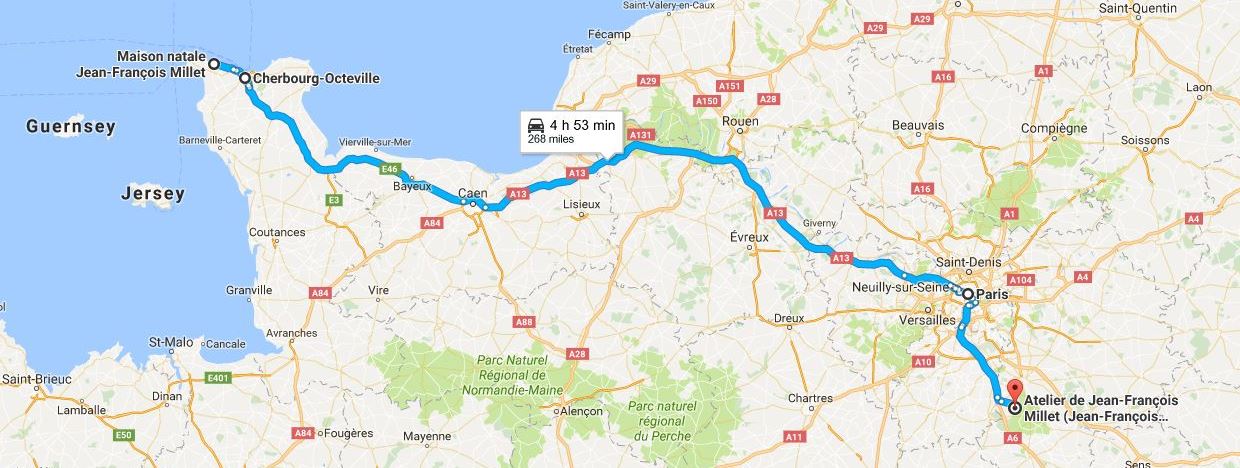
*Sensier, Alfred, Jean-François Millet, Peasant and Painter (translated by Helena de Kay). Boston: James R. Osgood and Company, 1881.
“You don’t mean the Jean-François Millet who painted The Angelus?” she said.
I was trying to tell Catherine a fantastic story about an artist I had just read in a book and was making a mess of it. There were many details and I had the order of their presentation all wrong. I showed her the book cover.
“The Sower was one of his paintings,” I said. “He had a studio in Barbizon.”
“That’s him. Millet is one of the great French landscape painters and L’angélus,” she used the French name, “is his most famous painting. You say your friend, James, is related to him?”
“Distantly.”
From the second and third books of James A. Owen’s Meditations Trilogy, the story of The Millet Fresco is really more of a legend. According to the author’s own admission, it is rumor and hearsay from across the ocean and passed down through the generations on his mother’s side of the family. It’s intriguing, nonetheless.
In an effort to get it more or less correct, I’ll summarize the story, first, then I’ll add some details.
A group of painters met at an inn in rural France where they decided to make a fresco. The project apparently never got past the planning stage. However, a journalist present at the meeting took some notes that described the meeting and the sketch one of the artists made of the planned fresco. The notes eventually came into the hands of a distant American cousin of the sketch-making artist. This cousin, a painter himself, was hooked on the idea of painting the fresco and so spent the rest of his life searching for the sketch described in the journalist’s notes. He never found it.
A mundane story, perhaps, but now the details.
According to Owen, the meeting of the painters took place following dinner one evening at an inn located in the French village of Barbizon. The date is unknown, though it may have been sometime during the 1870’s. Among the group was Vincent van Gogh and other now famous artists such as Gauguin, Cézanne and Seurat, in addition to Jean-François Millet. It was Millet who supposedly made the sketch of the planned fresco in collaboration with the others.
Robert Louis Stevenson was the note-taking journalist, and Millet’s distant American cousin who eventually got hold of Stevenson’s notes of the evening was named Francis Davis Millet. Finally, Stevenson’s notes came to F.D. Millet by way of none other than Mark Twain.
From mundane to extraordinary, and it gets better.
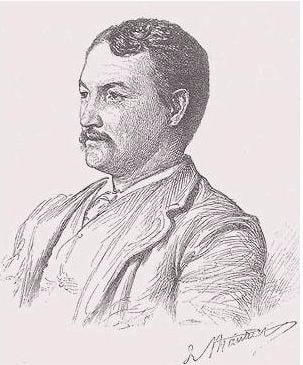
Though probably the least well-known of the names above, Francis Davis Millet is a notable character in his own right. In addition to painter, we can also count sculptor, architect, journalist and war correspondent among the man’s many talents. He traveled as far as Russia and the South Pacific, ostensibly on journalistic business, though possibly in search of the fresco sketch. In 1912 on a trip from Europe to New York, Millet booked passage on the maiden voyage of the largest ocean cruise liner ever put to sea at that time, the Titanic. He did not survive its sinking in the North Atlantic, nor presumably did Stevenson’s notes.
Again, Owen admits that the story is a family legend. There is no hard evidence of any truth to it whatsoever. Explorers know, however, that a legend often has a kernel of truth hidden inside it, like the grain of sand at the center of a pearl. During my journey to Barbizon, I will certainly keep an eye out for it.
Despite my focus here on the legend of The Millet Fresco, James A. Owen’s Meditations Trilogy is about finding and pursuing your purpose in life. The hardcover books, Drawing out the Dragons, The Barbizon Diaries and The Grand Design, are soon to be available by Coppervale Press in a slipcase set.
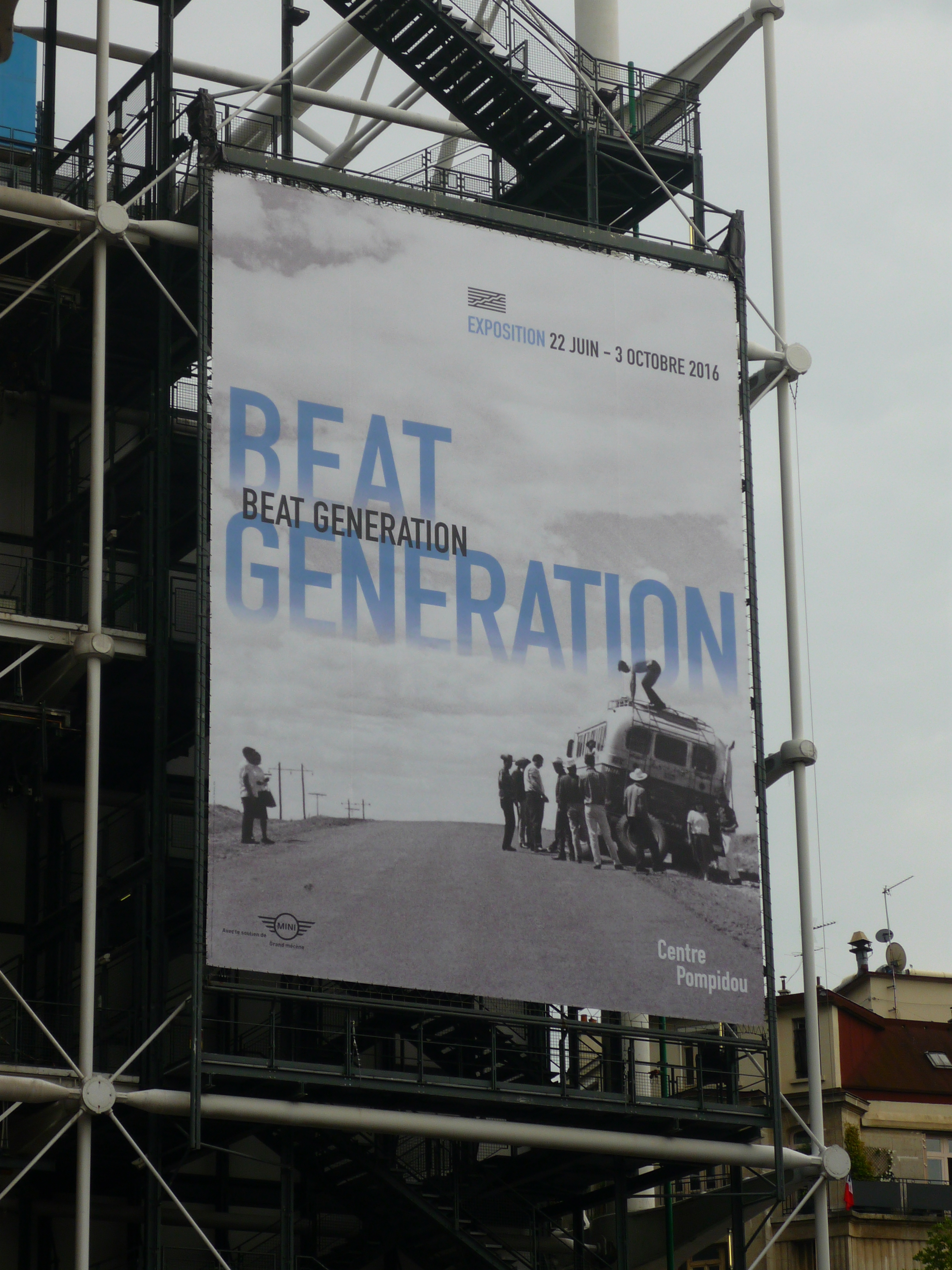 This poster caught my eye the other day in the street. Before the hippies of the 1960s, there were the Beats of the ‘50s. In the later half of that decade, three works emerged to become the Beat manifesto: Allen Ginsberg’s Howl (1956), Naked Lunch by William Burroughs (1959) and On the Road, Jack Kerouac (1957).
This poster caught my eye the other day in the street. Before the hippies of the 1960s, there were the Beats of the ‘50s. In the later half of that decade, three works emerged to become the Beat manifesto: Allen Ginsberg’s Howl (1956), Naked Lunch by William Burroughs (1959) and On the Road, Jack Kerouac (1957).
I read the story of Kerouac’s great American road trip as a young man, when we should read such stories. When there’s so little of our own road behind us and so much of it stretched out before us in wide, wavy, criss-crossing lines. When we can go anywhere, do anything and meet anybody. When we have no clue what it is we want to do, so we just go to where our feet take us and we meet people and find out where they’ve been and what they’ve been doing. Like that, we make our way until one day we finally discover what it is we want to do, what we’ve always wanted to do. Deep down, we knew it all along. But it takes the journey to wear away the layers of our soul, to expose our true self and show us just who it is we’ve been traveling with all our lives.
So I hopped aboard a passing train and went to see the exposition.
On the Road
“I first met Neal not long after my father died. I had just gotten over a
serious illness that I won’t bother to talk about except that it really had some-
thing to do with my father’s death and my awful feeling that everything was
dead. With the coming of Neal there really began for me that part of my life
that you could call my life on the road.”
— excerpt from the manuscript of Jack Kerouac’s On the Road
On the Road (Viking Press, 1957) follows Sal Paradise and Dean Moriarty on their mad, wild journeys back and forth across postwar America. It’s a mostly autobiographical account of Kerouac’s encounters with his overexcited friend, Neal Cassady. They hitch-hike, they jump rail cars, they sleep nights under tarps or in seedy motels and sometimes at the homes of friends or acquaintances. They stay in one place just long enough to make a little cash, working odd jobs, for the next leg of their adventure. And all along the way, they sleep with girls, smoke tea and live life as fast as it will go.
I didn’t think about what I might see at the show. I had heard the legend about Jack Kerouac bashing out his novel on a manual typewriter and one long scroll of tracing paper in a delirious stream of consciousness. But I had no idea the relic might yet exist and even be seen by mortal eyes.
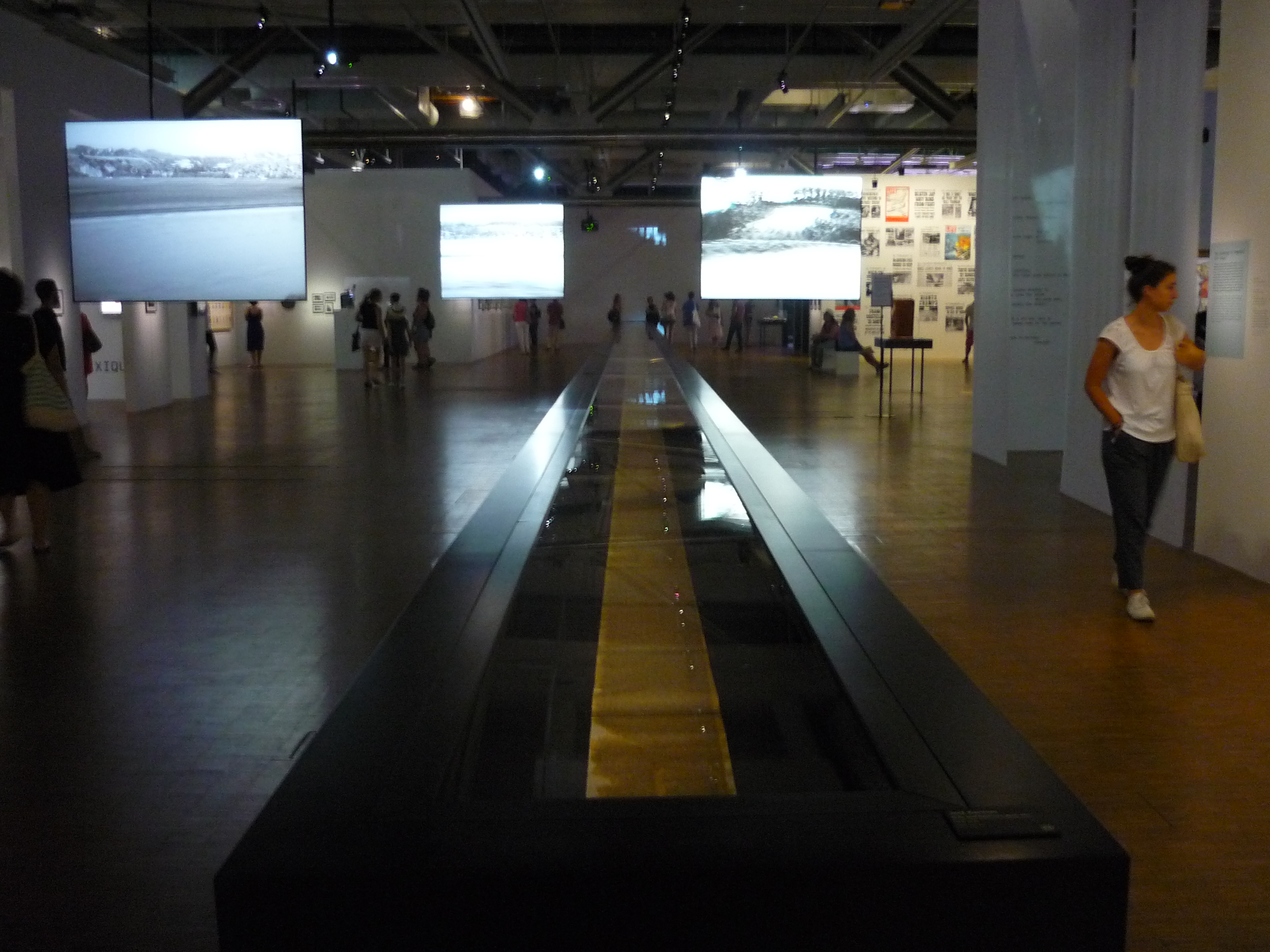 So coming through the turnstile, I was surprised by the long narrow box table stretching to the far end of the gallery. It hit me in an instant and I let out a “Wow!”
So coming through the turnstile, I was surprised by the long narrow box table stretching to the far end of the gallery. It hit me in an instant and I let out a “Wow!”
The Scroll
As one does with books that grab you from the start, I had memorized its opening lines a long time ago. Reading now from the top of the scroll (excerpt above) and comparing the text to my hazy memory, two things stood out. One is that in his draft the author still uses 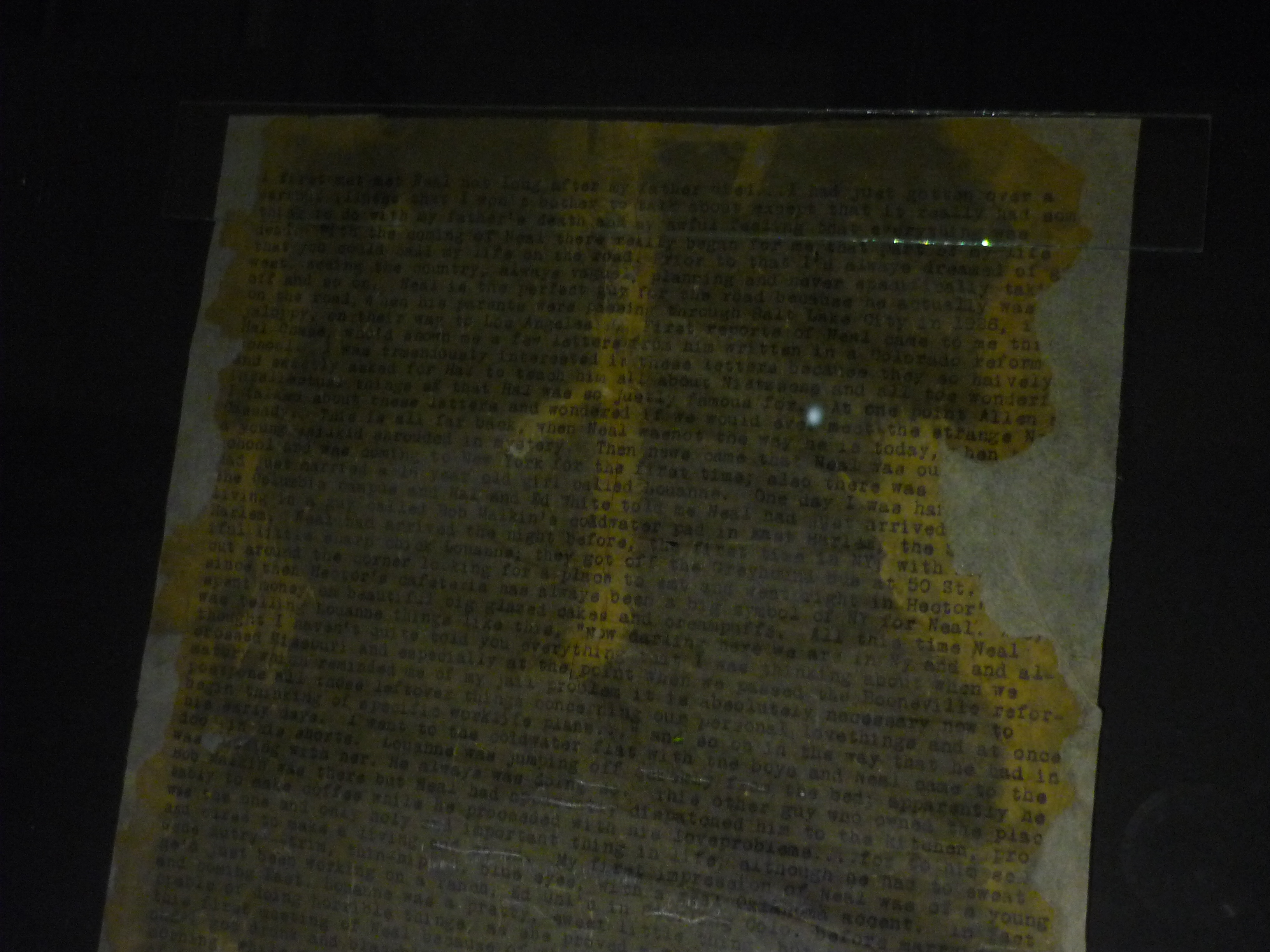 the real name of Neal Cassady, the real-life person who becomes Dean Moriarty in the book. The other is the cause of the serious illness. In the published version, it isn’t his father’s death but “after my wife and I split up” that his serious illness has something to do with. I remember thinking when I first read the book that “feeling that everything was dead” was unusually drastic for a break-up.
the real name of Neal Cassady, the real-life person who becomes Dean Moriarty in the book. The other is the cause of the serious illness. In the published version, it isn’t his father’s death but “after my wife and I split up” that his serious illness has something to do with. I remember thinking when I first read the book that “feeling that everything was dead” was unusually drastic for a break-up.
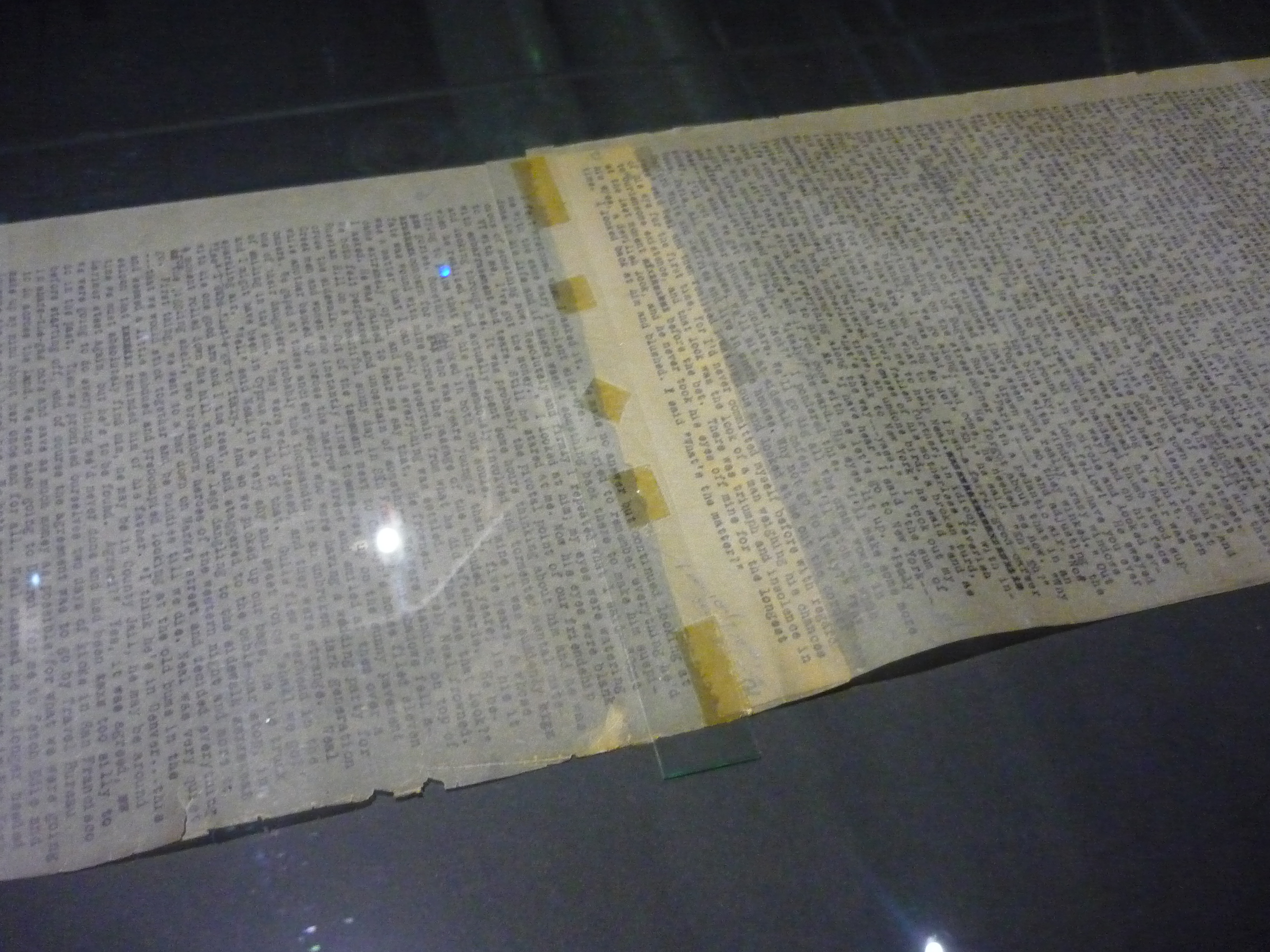 I learned from the display tag on the box table that the scroll is, in fact, the second draft of the novel and, perusing the 120-foot length of the thing, I noticed that it’s actually eight shorter scrolls, taped together.
I learned from the display tag on the box table that the scroll is, in fact, the second draft of the novel and, perusing the 120-foot length of the thing, I noticed that it’s actually eight shorter scrolls, taped together.
Some sections have pencil notes written at the bottom. Of which I could make out not a single word.
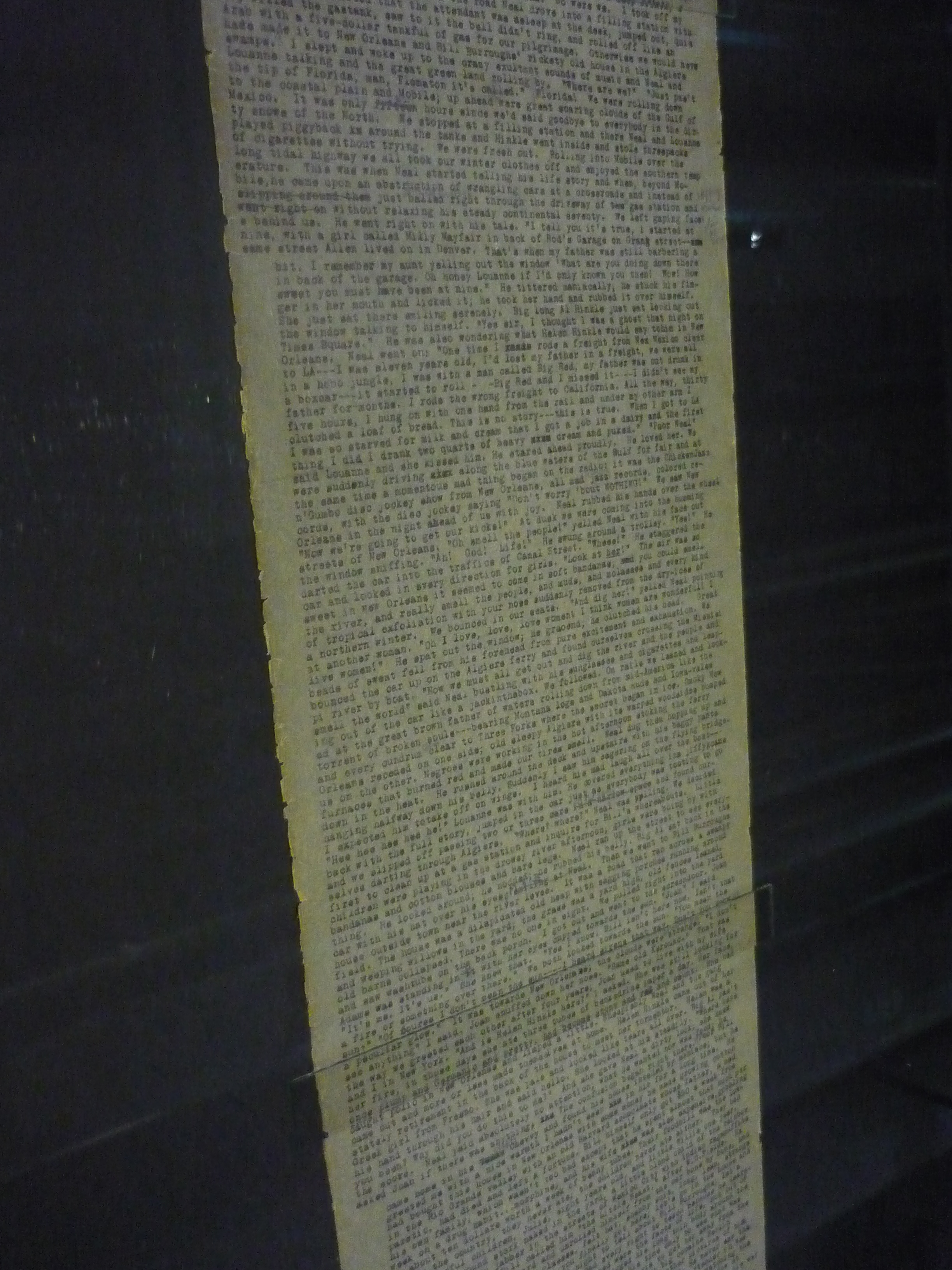 Note the left margin. Apparently, a sheet of paper 15 feet long necessitates occasional adjustment in the typewriting machine.
Note the left margin. Apparently, a sheet of paper 15 feet long necessitates occasional adjustment in the typewriting machine.
Beat Philosophy
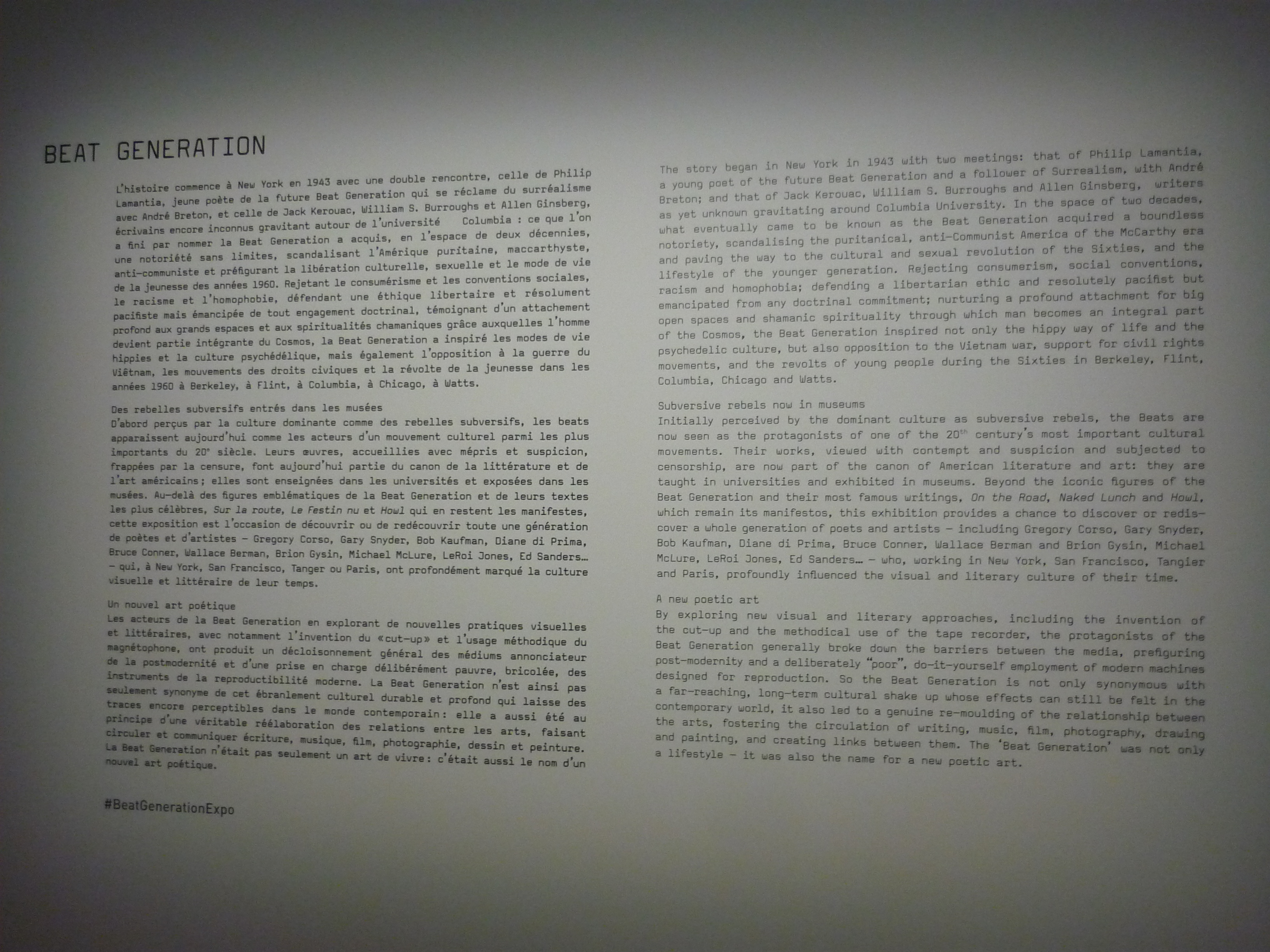 Excerpt from the introductory text to the exposition (photo right):
Excerpt from the introductory text to the exposition (photo right):
“Rejecting consumerism, social conventions, racism and homophobia; defending a libertarian ethic and resolutely pacifist but emancipated from any doctrinal commitment; nurturing a profound attachment for big open spaces and shamanic spirituality through which man becomes an integral part of the Cosmos, the Beat Generation inspired not only the hippy way of life and the psychedelic culture, but also opposition to the Vietnam war, support for civil rights movements, and the revolts of young people during the Sixties in Berkeley, Flint, Columbia, Chicago and Watts.”
Couldn’t we have another go at this?
Beat Art
Drawings by Beats, including Gregory Corso, Philip Whalen, William Burroughs, Jack Kerouac and Peter Orlovsky
What stuck me as I wandered through the sizable exposition: The Beats weren’t just writers and poets. They were also photographers and film-makers, sculptors and musicians. They made drawings, illustrations, collages and paintings. Mixing together these media, they created a wonderfully diverse body of work.
Scroll’s End
Kerouac wrote the scroll draft in April 1951, but he began writing the first draft of the novel as early as 1948. Several revisions and several rejections from publishers later, On the Road was finally published in 1957. It was his second novel.
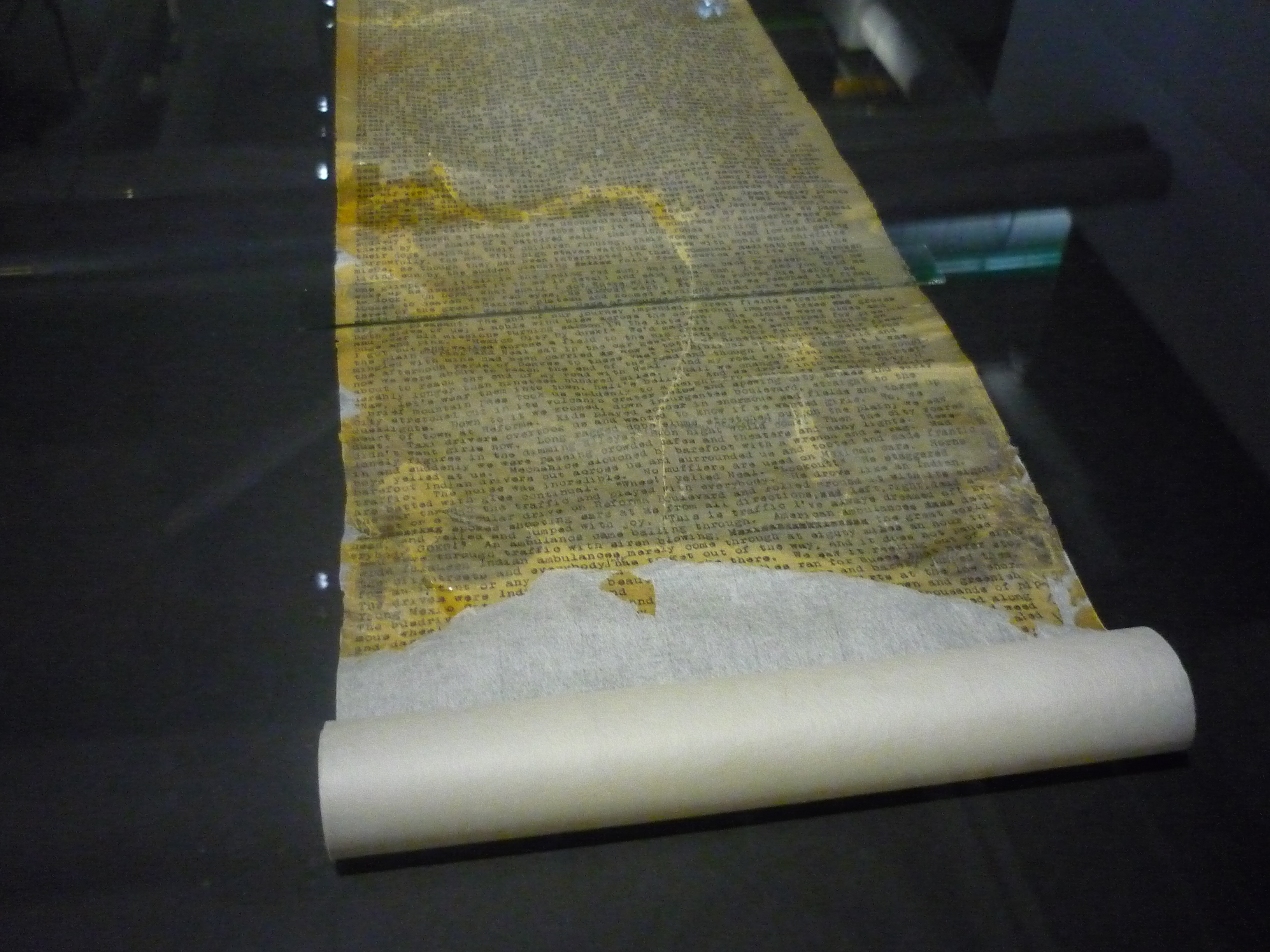 The end of the scroll has worn away. I could make out the words, “…ambulances merely come through at…,” which corresponds to text on page 301 in my copy of the book, nine pages from the end.
The end of the scroll has worn away. I could make out the words, “…ambulances merely come through at…,” which corresponds to text on page 301 in my copy of the book, nine pages from the end.
Safe under glass in the box table, Kerouac’s scroll seems out of context. I imagine dim yellow light on the peeling wallpaper of a New York apartment; a whiskey glass on the table, cigarette smoke hanging thick in the humid evening air as the author in sleeveless t-shirt bangs away on a noisy machine. Clack, clack, clack. The end of the novel and the author’s success are far off.
And between here and there… the road.
Beat Generation through October 3 at the Centre Pompidou, Paris.
The church bell tolls the hour across a somber field
Under summer evening’s hazy, slanted light.
The day’s potato harvest at their feet between,
A woman and a man in pra’er devotion stand.
Their daily tools of toil aside them idly lain
And crying birds in flight above on higher plane.
Signaled three times daily in previous centuries by the local church bell, the Angelus is a prayer devotion in the Catholic faith. Its name refers to the angel Gabriel who brought rather astonishing news to Mary (Luke 1:26-38).
In 1859, French painter Jean-François Millet captured the solemn moment in one of his most famous paintings named after the prayer.
I remember learning about the prayer and the painting in Art History class. Nineteenth century Europe was a different time, a different place and both so far away from Newberry, South Carolina, in the early 1990s that it cried, like the birds in flight above, straight over my head.
Having been recently reminded of these things, I did some research and discovered that L’angélus, the painting, currently resides at the Musée d’Orsay in Paris. No more so far away.
Furthermore, I learned that the painter himself lived and worked in a village a half-hour drive south of here. And so begins my pilgrimage to Barbizon.
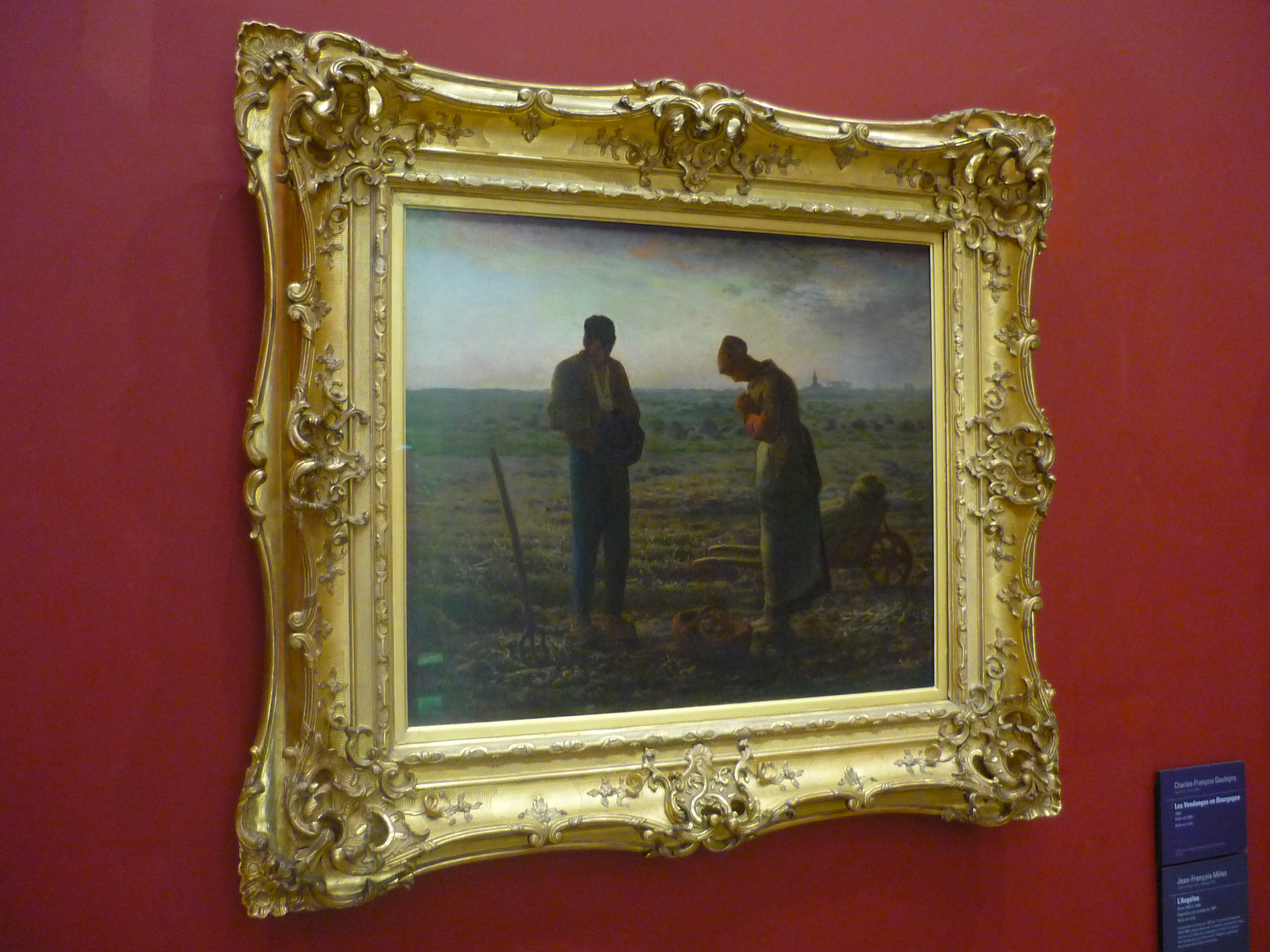 Photograph of L'angélus by Jean-François Millet at the Musée d'Orsay, Paris
Photograph of L'angélus by Jean-François Millet at the Musée d'Orsay, Paris
Paris, Metro station Châtelet, Thursday noon.
Approaching line 4, you start to hear airs of Brahms, Vivaldi or Mozart. The vibrations through the tiled corridors give the impression that you've stumbled into a grand concert hall. Around the next corner, there's the orchestra.
The modest venue is misleading. Prélude de Paris is a professional orchestra, having made European and African tours and appeared on several radio and television programs.
Still the orchestra performs here every Tuesday and Thursday afternoon. The price of admission is only the cost of your metro ticket and whatever change is leftover from your last coffee of the morning. You can also buy a CD and take the memory home with you.